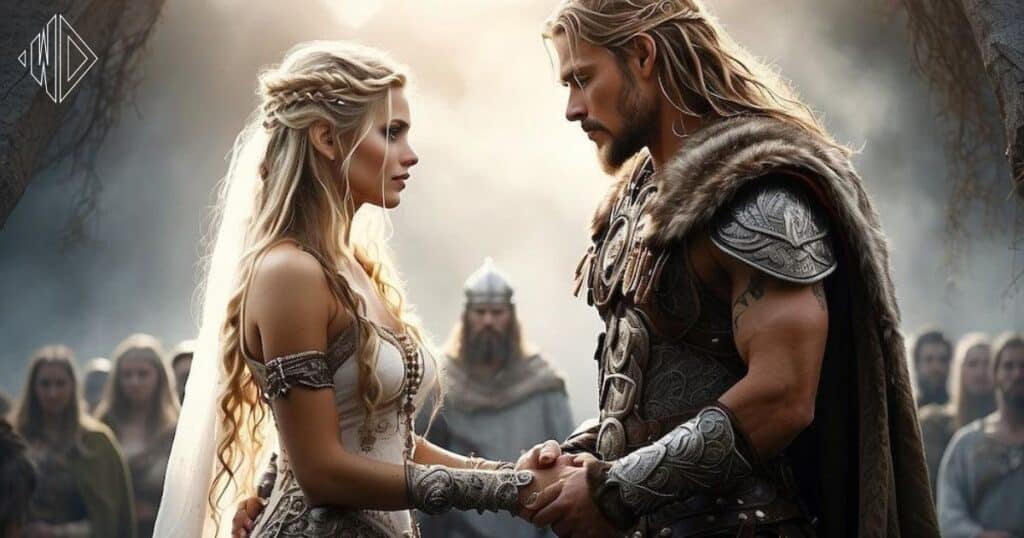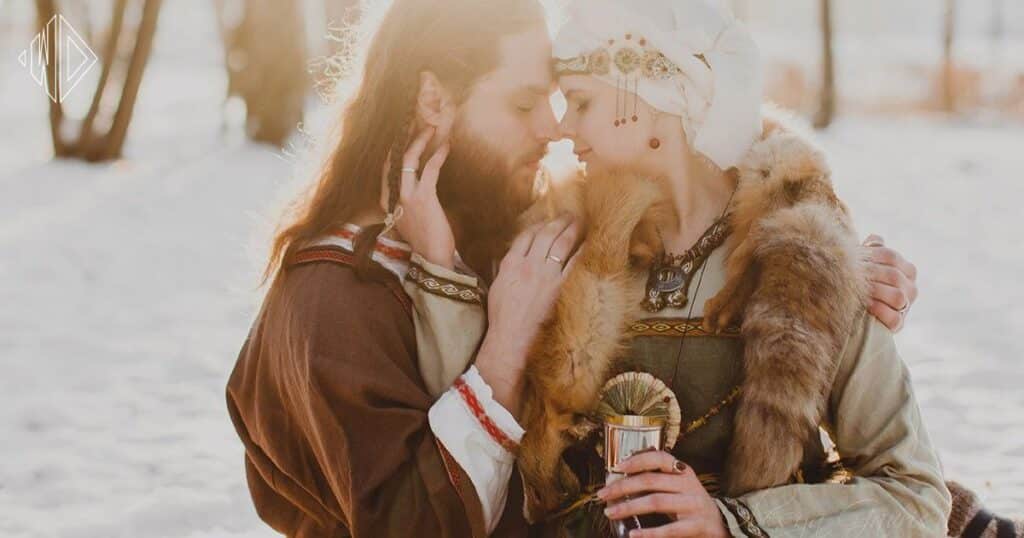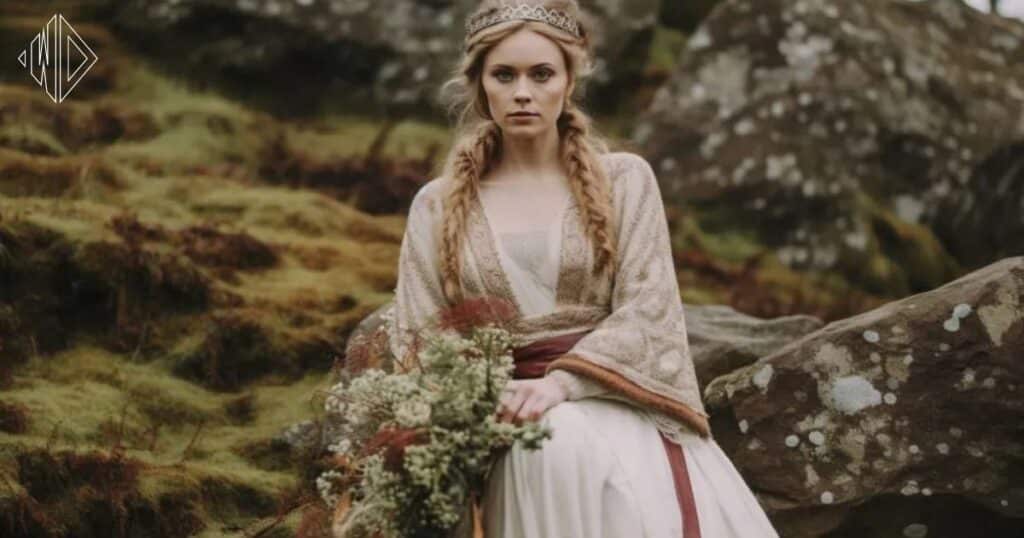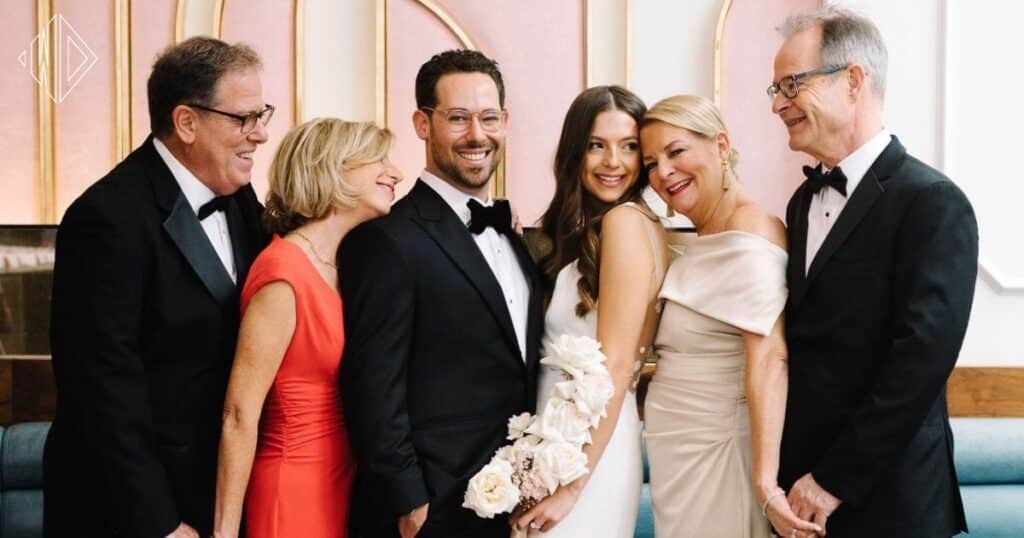In the ancient Norse world, weddings were more than just a union between two individuals – they were sacred rites steeped in centuries-old traditions, symbolism, and cultural significance. The Vikings, known for their fearsome warriors and seafaring exploits, also held marriage in high regard, celebrating nuptials with grand feasts, intricate rituals, and a deep reverence for the spiritual and social aspects of the bond.
The Origins and Symbolism of Viking Weddings

The roots of Viking wedding customs can be traced back to the early Germanic tribes that inhabited Scandinavia. Marriage was not just a personal matter but a pivotal event that strengthened alliances, secured political and economic ties, and ensured the continuity of lineages. The ceremonies were imbued with powerful symbolism, reflecting the Norse belief in the cosmic union of opposites – like fire and ice, sun and moon – coming together in harmonious balance.
One key symbolic element was the joining of two families’ ancestral lines, represented by the mingling of their respective hearth fires. This act signified the creation of a new household and the merging of two distinct bloodlines, a concept that held immense cultural significance for the Vikings.
The Viking Handfasting Ceremony
At the heart of Viking nuptials was the ancient ritual of “handfasting,” a betrothal ceremony that bound the couple’s hands together with a ribbon, cloth, or cord. This symbolic act represented the intertwining of their lives, loyalties, and fates, and was often accompanied by the exchange of solemn vows before witnesses.
The handfasting ceremony itself was a multi-layered affair, incorporating various symbolic elements:
- The couple would stand on a thick cloth or cloak, representing their new-found responsibility to build a household together.
- They would grasp a sacred object, such as a sword or a ring, embodying the values of strength, honor, and fidelity.
- The ceremonial binding of their hands would be performed by a respected elder or chieftain, who would invoke blessings from the gods.
Anecdotes abound of how this pagan practice influenced later Christian marriage ceremonies, with the tradition of exchanging rings and the iconic phrase “tying the knot” being remnants of the ancient handfasting ritual.
The Role of the Bride’s Family
In Norse culture, women held a prominent and respected position, with strong matrilineal roots that influenced wedding customs. The bride’s family played a crucial role in the marriage proceedings, often negotiating the terms of the union and determining the bride-price, a payment made by the groom to the bride’s kin.
The bride-price was not a mere transaction but a symbolic gesture that acknowledged the value and honor bestowed upon the family by the marriage. It also ensured that the bride entered the union with her autonomy and consent, a stark contrast to the patriarchal norms of many contemporary societies.
Tales of fierce Viking shieldmaidens and powerful queens like Lagertha and Freydis Eiríksdóttir exemplify the agency and independence that Norse women wielded, including the right to choose their husbands or remain unwed if they so desired.
Feasting and Celebrations
No Viking wedding would be complete without the grand feast, a social event that marked the couple’s rite of passage into a new phase of life. These celebratory gatherings were lively affairs, filled with the aroma of roasted meats, the sweet fragrance of honey-laced mead, and the rhythmic beats of music and dance.
Imagine a lavish scene where long tables groaned under the weight of succulent boar and venison, freshly baked bread, and an array of seasonal fruits and vegetables. Fires crackled in the hearth, casting a warm glow over the revelry, as skilled bards regaled the guests with ancient tales of love, valor, and the exploits of legendary heroes.
It was during these feasts that the newlyweds would be showered with well-wishes and gifts, ranging from practical household items to precious jewelry and weaponry. The festivities often lasted for days, with games, dances, and recitations of sacred poetry celebrating the union of the couple and the merging of their respective clans.
Viking Wedding Attire and Jewelry

As befitting such a momentous occasion, Viking brides and grooms adorned themselves in their finest garments and accessories, many of which held deep symbolic meaning.
For the bride, the traditional attire often consisted of a flowing dress made from finely woven linen or wool, richly embroidered with intricate patterns that held talismanic significance. Colors like blue, green, and red were favored, each hue representing different aspects of fertility, prosperity, and passion.
Over the dress, the bride would wear an ornate cloak or shawl, secured with an intricately crafted brooch or circlet adorned with symbols of Norse mythology, such as the mighty ravens of Odin or the eternal knots representing the interconnectedness of life.
The groom, in turn, would don his finest tunic and breeches, often adorned with intricate knotwork or animal motifs that spoke of his prowess as a hunter and warrior. His belt or sword hilt might bear runic inscriptions invoking the blessings of the gods for a fruitful union.
But perhaps the most iconic of all Viking wedding symbols was the ring. These circular bands, crafted from precious metals like gold or silver, were often inscribed with powerful runes or adorned with intricate knotwork designs. The unbroken circle represented the eternal cycle of life, love, and loyalty – a fitting emblem for the everlasting bond between husband and wife.
Examples of Traditional Viking Wedding Rings
| Ring Design | Symbolism |
| Valknut (Three Interlocked Triangles) | Symbolic of the Norse principle of interconnectedness and the union of body, mind, and spirit. |
| Ouroboros (Snake Eating Its Tail) | Represents the cyclical nature of life, death, and rebirth – a powerful symbol of eternal love. |
| Vegvisir (Viking Compass) | Signifies guidance, protection, and finding one’s way through life’s journey together. |
| Runes (Ancient Norse Alphabet) | Specific rune combinations could convey blessings, well-wishes, or the couple’s names. |
Modern Viking-Inspired Weddings

In recent years, there has been a resurgence of interest in Norse heritage and traditions, with many couples seeking to incorporate elements of Viking culture into their modern wedding ceremonies.
From handfasting rituals performed by self-proclaimed “Norse Pagan” officiants to venue decorations inspired by ancient longhouses and intricate knotwork designs, the allure of these ancient customs has captured the imagination of those seeking to honor their ancestral roots or simply embrace the mystique of Viking lore.
“The traditions of our ancestors hold a special kind of magic,” says Sarah, a bride who incorporated Viking elements into her recent nuptials. “Exchanging vows while bound by a ceremonial cord, surrounded by the scent of burning juniper, and sharing a draft of mead from a carved drinking horn – it all made our wedding feel like a truly authentic and meaningful experience.”
For those seeking to add a touch of Viking flair to their special day, here are a few creative ideas:
Attire and Accessories:
- Wear a traditional Norse-style dress or tunic
- Adorn your hair with a circlet or wreath of fresh flowers and greenery
- Carry a bouquet featuring symbolic blooms like thistles, heather, or juniper
- Exchange handcrafted rings or drinking horns as part of the ceremony
Ceremony Elements:
- Perform a handfasting ritual, binding your hands with a ribbon or cord
- Incorporate ancient Norse blessings or poetry into your vows
- Light a ceremonial fire or candles to represent the joining of two hearth fires
- Exchange symbolic objects like swords, hammers, or rune stones
Decor and Ambiance:
- Decorate with Viking-inspired elements like carved wood, furs, and intricate knotwork patterns
- Use candles and torchlight to create a warm, atmospheric glow
- Serve traditional Viking fare like smoked meats, hearty breads, and honey-laced mead
- Hire a skilled storyteller or musician to regale guests with ancient Norse tales and melodies
The Role of the Gods in Viking Weddings
In the Norse pagan belief system, the gods played a central role in all aspects of life, including marriage. Invoking their blessings and seeking their favor was an integral part of the wedding rituals. Frigga, the goddess of marriage and motherhood, was a revered figure, as were the fertility gods Freyr and Freyja.
Couples would offer sacrifices and prayers to these deities, seeking their protection and guidance as they embarked on their new journey together. Rune charms and talismans bearing the symbols of these gods were often incorporated into wedding attire or ceremonies, serving as powerful amulets to ward off evil forces and ensure a blessed union.
The Importance of Fertility and Childbearing
For the Vikings, marriage was not just about the union of two individuals but also the continuation of family lines and the preservation of clan legacies. As such, fertility and childbearing held immense significance in Norse wedding customs.
Brides often carried bouquets or wore garlands featuring symbolic flowers and herbs like thistles, heather, and juniper, all believed to promote fertility and ensure a bountiful household. Ancient fertility rituals, such as the bride and groom leaping over a ceremonial fire or the groom striking the bride gently with a bundle of twigs, were also practiced to encourage the bearing of strong, healthy offspring.
The Role of the Groom’s Family

While the bride’s family played a pivotal role in negotiating the terms of the marriage, the groom’s kin also had important responsibilities. In addition to providing the bride-price, the groom’s family was expected to contribute to the establishment of the new household.
This could include gifting the couple with practical items like livestock, tools, or even a plot of land to build their homestead. The groom’s father or a respected elder would often preside over certain aspects of the ceremony, offering wisdom and blessings to the new couple as they embarked on their shared journey.
Viking Love Stories and Legendary Romances
Despite their fearsome reputation as warriors and explorers, the Vikings were not immune to the timeless allure of love and romance. In fact, many enduring tales and sagas from Norse mythology and literature revolve around epic love stories that have captured the imaginations of generations.
Take, for instance, the tragic yet beautiful tale of Helgi and Svava, star-crossed lovers whose passion transcended even death itself. Or the story of Brynhild and Sigurd, a fierce shieldmaiden and a mighty hero whose love was cursed by the trickery of others, leading to a fateful end.
These legendary romances, filled with passion, jealousy, and the interplay of human and divine forces, offer a glimpse into the Vikings’ complex understanding of love – as a powerful, all-consuming force that could inspire both great acts of valor and heartbreaking tragedy.
Conclusion
From the solemn handfasting ceremonies to the raucous feasting and revelry, Viking wedding traditions offer a captivating glimpse into the rich cultural tapestry of the ancient Norse world. These age-old customs, steeped in symbolism and reverence for the sacred bonds of love and family, continue to inspire and intrigue modern couples seeking to imbue their nuptials with a sense of heritage and timeless romance.
As the old Norse saying goes, “Blessed is the love that is consecrated by the vows of husband and wife, and their union hallowed by peace and moderation.” Perhaps in revisiting these ancient wisdom, we can find renewed appreciation for the enduring power of love and the rituals that have celebrated it across generations.
So whether you’re a history buff drawn to the mystique of Viking culture or simply seeking to infuse your special day with a touch of ancient magic, let these ancient Norse traditions be a source of inspiration for crafting a truly unforgettable and meaningful wedding celebration. Read more: Gal Gadot Wedding Dress
Frequently Asked Questions
What was the significance of the handfasting ritual in Viking weddings?
The handfasting ritual was a sacred betrothal ceremony where the couple’s hands were bound together with a cloth or cord, symbolizing the intertwining of their lives and fates. It was considered a solemn vow before witnesses and was often accompanied by the exchange of meaningful objects like swords or rings.
Did Viking brides wear white dresses?
No, Viking brides did not traditionally wear white dresses. Instead, they adorned themselves in richly embroidered dresses made of linen or wool, often in colors like blue, green, and red, which held symbolic meanings related to fertility, prosperity, and passion.
What was the role of the bride’s family in Viking wedding customs?
The bride’s family played a crucial role in Viking weddings. They were responsible for negotiating the terms of the union, including the bride-price paid by the groom’s family. The bride’s consent and autonomy were highly valued, reflecting the strong matrilineal roots of Norse culture.
What is the significance of the circular design in Viking wedding rings?
The circular shape of Viking wedding rings was symbolic of the eternal cycle of life, love, and loyalty. The unbroken circle represented the everlasting bond between husband and wife, and rings were often adorned with intricate knotwork designs or runic inscriptions invoking blessings and well-wishes.